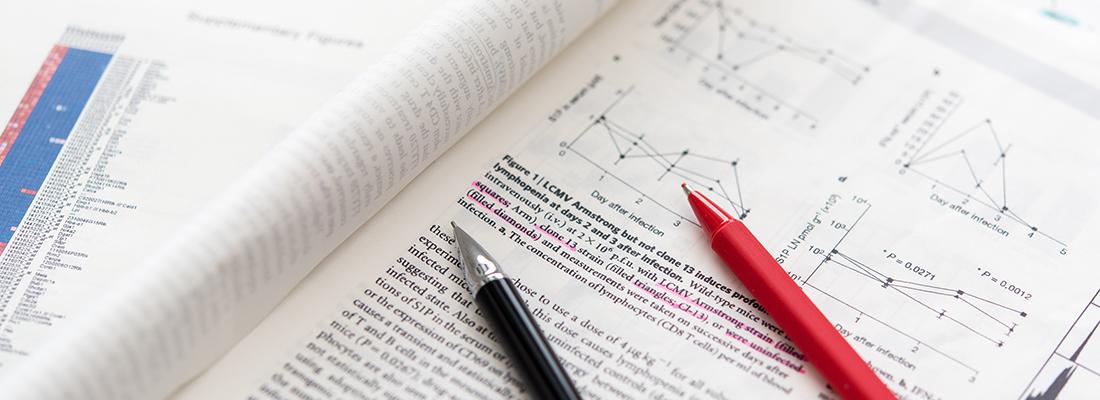Reading time 5 min
Scientific publishing under strain
Published on 13 October 2023

Indices for characterizing publishing strain were collaboratively developed by Paolo Crosetto (INRAE, GAEL), Mark A. Hanson (University of Exeter), Pablo Gómez Barreiro (Royal Botanic Gardens, Kew), and Dan Brockington (Autonomous University of Barcelona). These indices were constructed by gathering data from websites or publishers for all articles indexed in Scopus and Web of Science between 2016 and 2022. The subsequent findings made it possible to describe patterns in publisher activity, citation practices, and article turnaround time. The latter is the time to acceptance for a scientific article following submission; its duration is partially determined by the degree of formal review conducted by research specialists.
This study has given rise to an evidence-based approach for measuring current strain on scientific publishing and proposes concrete solutions for improving industry efficiency and transparency. Its results have shed light on the publishing groups and practices that have most contributed to the burgeoning number of articles.
Truncated turnover and a surge in special issues
The study found that certain publishing groups have disproportionately influenced the exponential growth in articles, thereby exacerbating publishing strain. Heading this list is the Multidisciplinary Publishing Institute (MDPI), which is responsible for around 27% of the increase seen. Next in line are Elsevier (16%), Frontiers (11%), Springer (9.5%), and Wiley (6.8%).
This pattern partially stems from a particular practice that has been adopted by MDPI, Frontiers, and Hindawi, among others: the increased use of special issues. In general, special issues explore specific topics; they often highlight important work that has been presented at symposia or that addresses scientific issues of pressing concern. However, their usage has taken a turn in recent years. Journals are now treating special issues as an opportunity to recruit guest editors who can leverage their research networks to solicit article submissions. Across the board, article turnaround is shorter for special issues than for regular issues. For groups such as MDPI and Hindawi, rejection rates are also lower.
In certain publishing groups, article turnaround time is dropping as a general rule. For example, the mean time to acceptance is consistently faster at all MDPI journals (~37 days) than at Nature journals (~185 days) or Elsevier journals (~134 days). A 2022 study first drew attention to this trend, finding that overall mean turnaround had fallen from 150 days in 2011–2012 to 137 days in 2019–2020. It seems questionable that the complex task of evaluating a scientific article could be accomplished within such a short time period, especially when accounting for the revision process.
Ballooning impact
The precipitous increase in publications has created "impact inflation". It is important to understand that a journal’s relative "impact" is its degree of visibility, as expressed through various performance metrics, including citation number. The more a journal's articles are cited, the greater that journal’s "impact". Journal impact has tangible effects. For example, funding bodies may consider the rank of a researcher’s publishing outlets when evaluating research and/or grant proposals.
Thus, publishing groups can exploit such indices, one of the most common being Clarivate’s impact factor (IF). In the study described here, the researchers developed an index of their own to quantify impact inflation. They demonstrated that all publishers, to varying degrees, have artificially increased impact metrics for their journals. One technique includes self-citation, when articles disproportionately cite work from the same journal or publishing group. On average, self-citation is in decline at most publishers. In contrast, it is on the rise at MDPI, Frontiers, and Hindawi. Widespread impact inflation will complicate assessments of research quality and could, in the longer term, threaten the credibility of science as an institution.
The future of scientific publishing
This research involved a quantitatively rigorous analysis of current concerns in scientific publishing. Its intent is to foster scientifically productive debate, and its impartial findings translate into straightforward recommendations for grappling with existing challenges. The researchers call for greater transparency in scientific publishing and underscore the essential roles to be played by funding and research organizations. These entities could strategically discourage the misuse of special issues and reduce the pressure faced by scientists burdened with publication requirements.
In spring 2023, INRAE published a guide entitled "Best practices for achieving 100% open-access publication by 2030."
The guide emphasizes the following:
INRAE scientists can publish wherever they wish, regardless of the journal’s mode of access. However, the institution asks that researchers guarantee open access to their findings, by depositing complete copies of their publications in HAL INRAE and by making available their data and coding scripts (i.e., to facilitate reproducibility). In addition, the institute recommends ways to limit publishing expenses and describes the warning signs of unethical publishing practices.
Since 2023, INRAE researchers have been evaluated and promoted based on their open-access body of work, which is downloaded directly from HAL INRAE.
The guide is available here.
Reference
Hanson M. A., Barreiro P. G., Crosetto P., Brockington D. (2023). The Strain on Scientific Publishing. https://t.co/4mitceMZAh
The authors of the study received no outside funding for this work. The pre-publication version of this article is freely accessible via arXiv.org.
